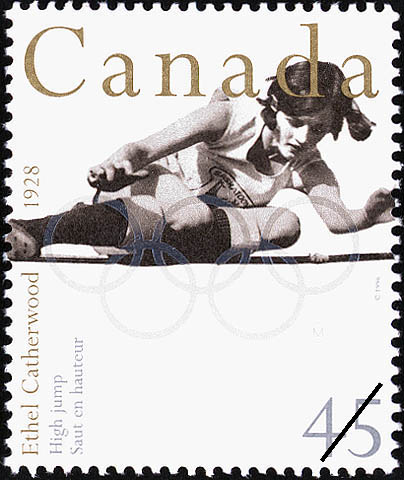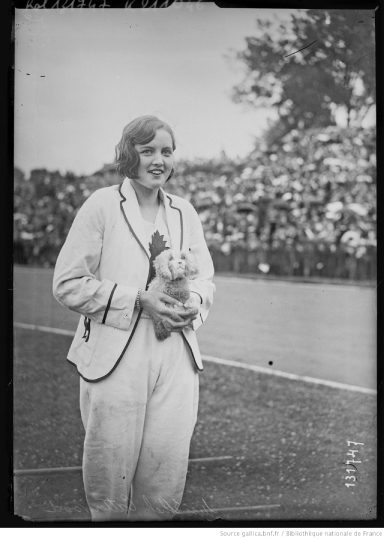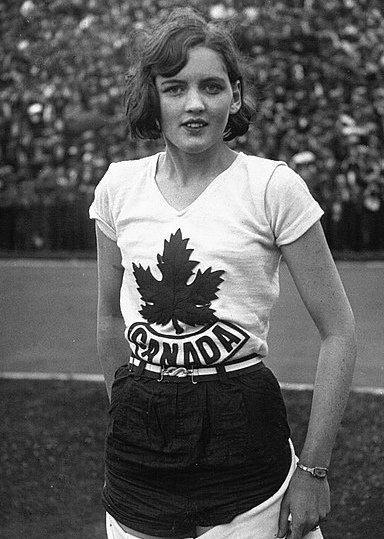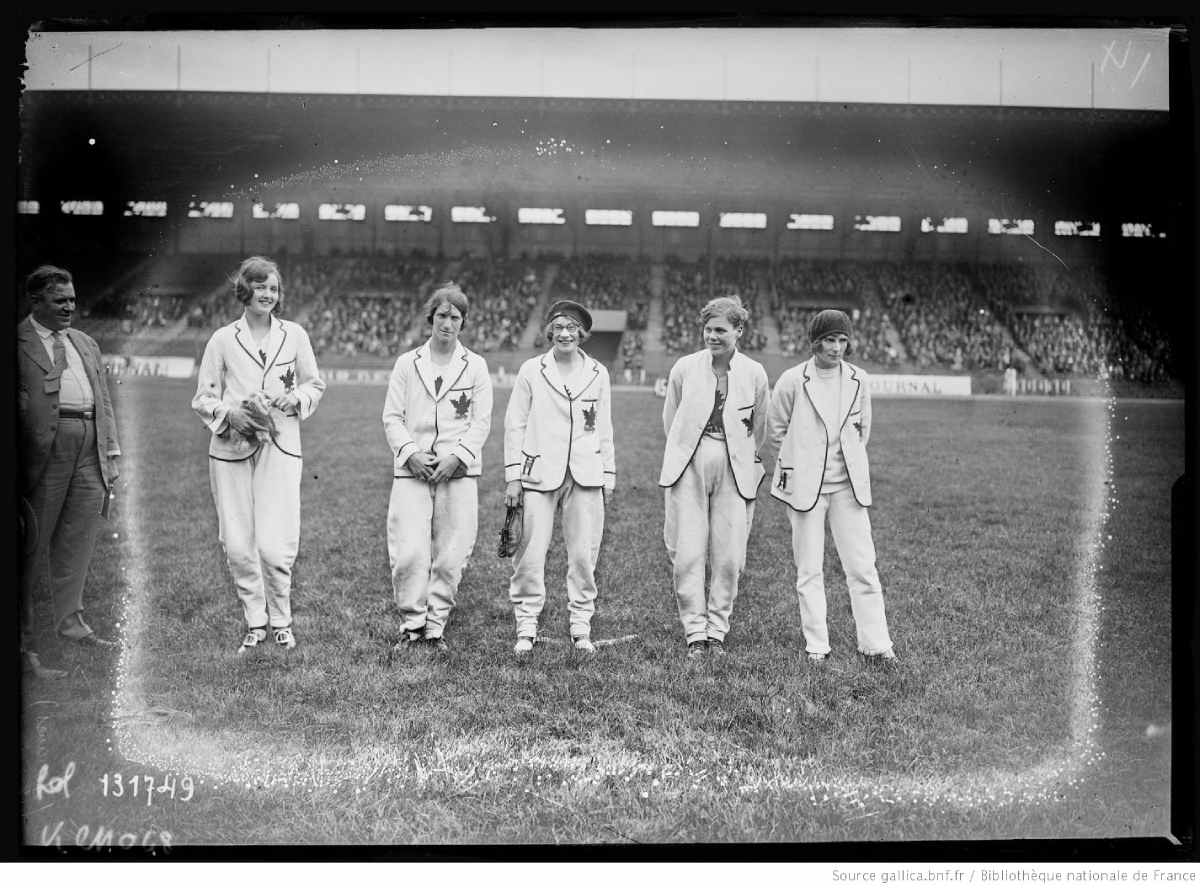Ethel Catherwood National Historic Person (1908–1987)

© Canada Post Corporation/Library and Archives Canada
Ethel Catherwood was designated as a national historic person in 2022.
Historical importance: Set multiple national and world records between 1926 and 1930, helped to expand the perceived limits of athletic performance for women in sports.
Commemorative plaque: no plaque installedFootnote 1
Ethel Catherwood (1908–1987)
Ethel Catherwood was a world-class athlete who improved women’s opportunities to compete in track and field sports during a time when women had to fight their way into international competitions. Between 1926 and 1930, she set multiple national and world records in the high jump and the javelin throw while facing endemic sexism as a young woman. She won the gold medal in the high jump at the 1928 Amsterdam Olympic Games, the first to include women’s track and field. Catherwood is the only Canadian woman to have won gold in an Olympic individual track and field event during the 20th century and the first quarter of the 21st century.
Born in 1908 in North Dakota, in the United States, Catherwood spent her childhood with her Canadian parents and eight siblings in Scott, Saskatchewan. It was in Scott where she honed her versatile athletic skills in track and field, basketball, baseball, skating, and ice hockey. In order to support her passions, her father built a high-jumping pit in their backyard. At 16, she won a wager with him when she raised her jumping bar to a height no female athlete had reached before, according to official records, and cleared it. In 1925, the Catherwoods moved to Saskatoon. Catherwood spent the next five years excelling in the high jump and the javelin throw at competitions in Saskatchewan, Ontario, and Eastern Canada, breaking national and world records. She then moved to Toronto to train at the Parkdale Ladies’ Athletic Club, attend business college, and work at a brokerage company.

© Public domain, taken from https://gallica.bnf.fr
/ark:/12148/btv1b53203751z.r=Ethel%20Catherwood?rk=42918;4#

© Public domain, taken from https://commons.wikimedia.org/wiki
/File:Ethel_Catherwood_1928_gallica.jpg
In 1926, thanks to the efforts of women’s sporting organizations, the International Olympic Committee reluctantly agreed to include five women’s track and field events (high jump, the 100-metre and 800-metre races, the 4×100-metre relay, and the discus throw) at the 1928 Olympic Games in Amsterdam, the Netherlands. This was on a trial basis, and the future of women in the Olympic Games rested on the women’s athletic performances. Catherwood made the Canadian Olympic track and field team with Jane Bell, Myrtle Cook, Bobbie Rosenfeld, Ethel Smith, and Jean Thompson. In Amsterdam, they became known as the Matchless Six. Catherwood won gold in the high jump, and the rest of the team won gold in the relay, and one silver and one bronze in the 100-metre dash. Together, these women demonstrated outstanding athletic skills and determination that forever changed mainstream opinion on women’s athletic abilities in track and field.

© Public domain, taken from https://gallica.bnf.fr/ark:/12148/btv1b532037119.r=Ethel%20Catherwood?rk=21459;2#
After the Games, Catherwood returned to Toronto and won Canadian titles in the high jump and the javelin throw in 1930 before retiring from sports. Throughout her life, sportswriters described her high-jumping athleticism yet, given intense sexism in sports, focused on her beauty and judged her personal life, which were some of the reasons why she retreated from public life. Known as the “Saskatoon Lily,” she was the most photographed athlete of the 1928 Games. She moved to California in 1931. In 1966, Canada Post issued a commemorative stamp depicting her epic jump. She was inducted into the Canadian Olympic Hall of Fame in 1949 and the Canadian, Saskatchewan, and Saskatoon Halls of Fame in 1955, 1966, and 1986, respectively. She died in Grass Valley, California, in 1987.
“As a Paralympian, I hold a great deal of respect for Ethel Catherwood’s legacy that is acknowledged through this national historic designation. Alongside her teammates, the Matchless Six, she demonstrated outstanding athletic skills and determination that forever changed the world of sports, making it a more inclusive space for women to compete.”
This press backgrounder was prepared at the time of the Ministerial announcement in 2023.
The National Program of Historical Commemoration relies on the participation of Canadians in the identification of places, events and persons of national historic significance. Any member of the public can nominate a topic for consideration by the Historic Sites and Monuments Board of Canada.
- Date modified :